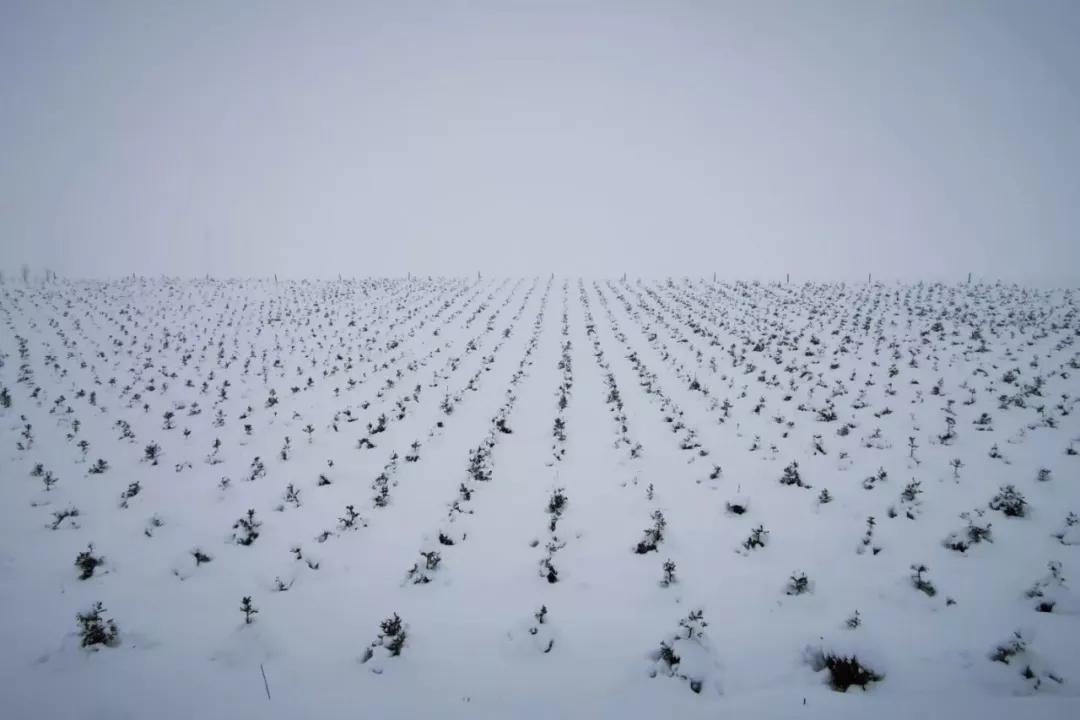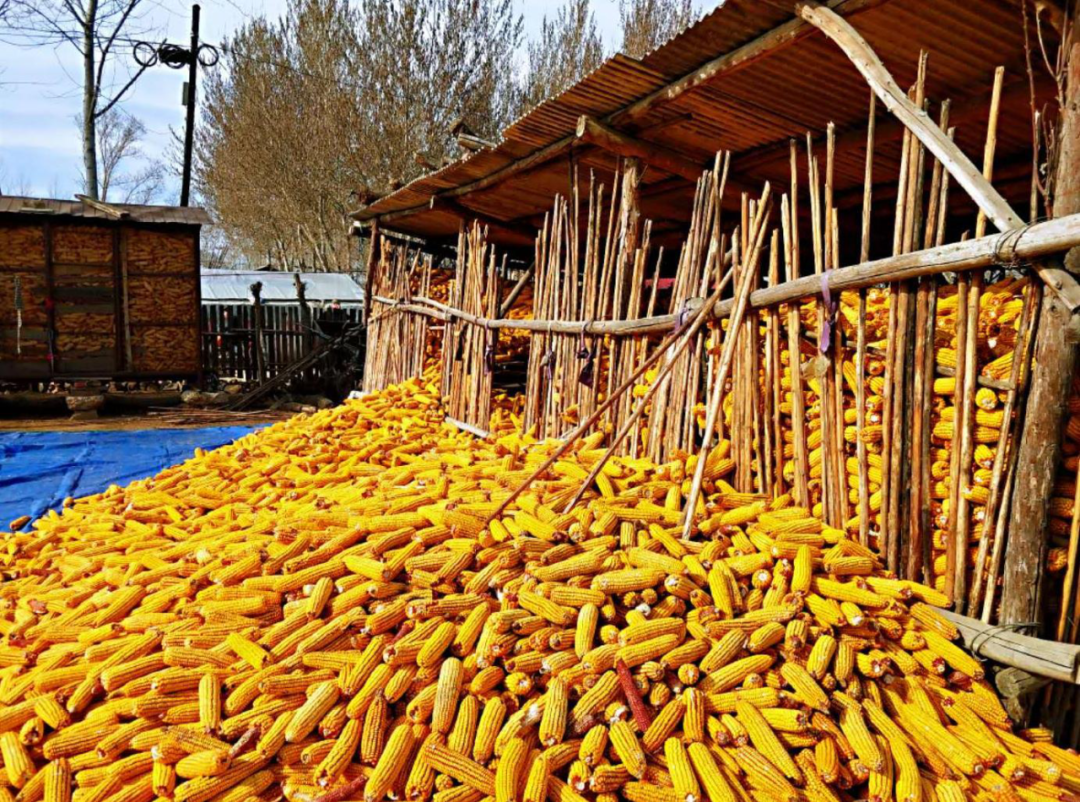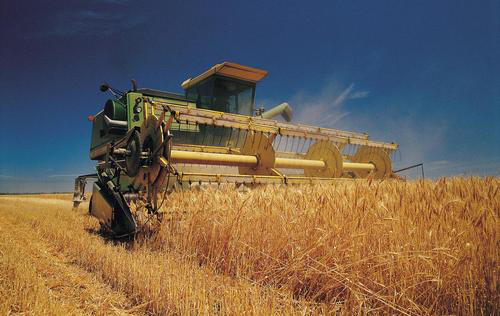The No. 1 central document for 2021 proposed to“comprehensively advance the rural revitalization and accelerate the modernization of agriculture and rural areas”. According to the data of the third national agricultural census, there are 230 million rural households in China, of which 98% are smallholder households. The average arable land area per household is 0.5 hectares; 210 million households have less than 0.7 hectares each. Smallholder households, small in production scale and poor in risk resistance, make up the majority of the rural households in China. To realize rural revitalization, we must enable 210 million smallholder households to obtain decent income through modernized agricultural production, and a thriving rural economy.
The“pain-points”of traditional agricultural insurance
The natural attributes of agricultural products bring great uncertainties to agricultural income. First, agricultural products are very susceptible to natural disasters such as extreme weather, pests and diseases, which may lead to poor harvest or no harvest. Second, most agricultural products are perishables, whose storage and logistics costs are high and thus sales cycle is short. Therefore, agricultural products are more vulnerable to changes in market supply and demand and unexpected events.
In recent years, the prices of agricultural products have skyrocketed and plummeted from time to time as a result of blindly following the market trend, leading to the situation that even a good harvest could not ensure a good income for farmers. These factors have made a dent in farmers’ interest in agricultural production and reduced the proportion of agricultural income in rural households. In the long run, it will also undermine the international competitiveness of Chinese agricultural products.

To bolster farmer's interest in production, it is important to reduce the production and operation-related risks with agricultural insurance. In 2007, the Ministry of Finance issued Measures for the Administration of the Agricultural Insurance Premium Subsidies from Central Finance to support the development of agricultural insurance. With government-subsidized agricultural insurance, China's agricultural insurance market is developing rapidly. In 2007, the premium of agricultural insurance in China was 5.333 billion yuan, which rapidly grew to 67.248 billion yuan in 2020, with an average annual growth rate of 23.51%.
Despite its notable progress in terms of the total amount, there is still room for improvement in the implementation of agricultural insurance; otherwise, it cannot be given a full play. During the research in Yijun County, Shaanxi Province and Pingjiang County, Hunan Province in 2019, I have learned from the farmers that the rural area has been basically covered by agricultural insurance, but there are still some operational issues that hinder agricultural insurance from coming into play.
Fieldwork on the Implementation of Agricultural Insurance
The main crops in Yijun County, Shaanxi Province, are corn, walnuts and apples, all covered by agricultural insurance.
-The premium for corn is fully covered by the government, and the farmers expressed that they would not insure it if they have to pay the premium out of their own pockets, indicating a low acceptance of agricultural insurance among farmers.
-In 2018, walnuts production was hit by a natural disaster. Farmers surveyed said the insurance company had rejected their claim but returned their premium on the ground that too much area was affected by the disaster. I presume that the insurance for the walnuts was cooperative insurance.
-The premium for apples is 80 yuan, half of which is covered by government subsidies and the other half out of farmers’ own pocket. From 2015 to 2017, the production of apples in Yijun County was struck by natural disasters of various degrees for three consecutive years. While the compensation was paid out 4200 yuan per hectare in 2016 and 16,200 yuan per hectare in 2017. To put the numbers into perspective, apples can generate an income of about 150,000 yuan per hectare under normal marketing conditions with the cost of 60,000 yuan per hectare. The payout of agricultural insurance can hardly compensate for the loss of income caused by natural disasters; actually, it can barely cover the cost. Therefore, traditional agricultural insurance cannot really protect farmers from risks.
Paddy rice and oil tea are the main crops in Pingjiang County, Hunan Province.
-The minimum insured area for rice is 13.3 hectares, so generally, it is insured by the village collectively, with a certain amount of government subsidies. However, villagers reported that the compensation was too insignificant to protect farmers against risks. For example, a total area of 45.3 hectares of rice was insured by the Tanxu village, Yuping Town, with a collective premium of 5,000 yuan, but the insurance company only compensated 10,000 yuan for the flood in 2016.
- As a key industry in Pingjiang County, oil tea is covered by policy insurance in recent years, and the government subsidy is even more than the premium. Therefore, the local oil tea growers are highly motivated to get insured. However, due to the limited quota, many farmers are not insured. It shows that the scale of government subsidies and the coverage of agricultural insurance are yet to be improved.
The agricultural insurance cases in Yijun County and Pingjiang County can reveal some current problems of traditional agricultural insurance in China: low level of protection, the low willingness of farmers to take out insurance, insufficient market operations, too much reliance on government subsidies, a mismatch between insurance model and the agricultural production, and limited coverage of crop types.
Due to the systematic nature of natural disasters and price risks facing agricultural products, it is difficult for insurers to hedge the risks with traditional insurance under the law of large numbers. Therefore, insurance companies are reluctant to insure crops and like products, and the compensation is rather limited compared with the losses caused by natural disasters. Therefore, traditional agricultural insurance is insignificant for farmers to hedge the risks of natural disasters and fluctuations of the market prices.

The“insurance plus futures”model, a solution that benefits all
The No.1 central document for 2021 proposes that“ the‘insurance plus futures’model should be given a full play in the development of rural industries”. This is the sixth year in a row that the No.1 document has emphasized the important role of“insurance plus futures”in the work of“agriculture, rural areas and farmers”since 2016.
The“insurance plus futures”model seems to be a solution to the problems of traditional agricultural insurance. Since the issuance of relevant policies, the pilot projects of“insurance plus futures”in China have been expanding with the innovative service model. More than 400 pilot projects have been implemented in three major futures exchanges (Zhengzhou Commodity Exchange, Dalian Commodity Exchange and Shanghai Futures Exchange) in China, and the product has been diversified: from the initial“insurance plus futures” model to“insurance plus futures plus banks”and“insurance plus futures plus banks plus basis difference acquisition”. The participants also become increasingly diversified, including government, farmers, insurance companies, subsidiaries of futures companies, banks and agricultural companies.
China's futures market is gradually maturing in this process. The three major futures exchanges currently offer six exchange-traded options of agricultural products and 23 agricultural futures products, including soybean, corn, hog, wheat, rice, canola oil and other important crops.
From the practice of the“insurance plus futures”model, insurance companies and futures companies can transfer the price risk of agricultural products from insurance companies to the capital market through their complementary advantages. It reduces the operational risks of insurance companies and increases their willingness to cover agricultural products. It can thus effectively ensure the income of agricultural production, strengthen the capacity of insurers to serve agriculture and expand their scale and income, and enrich the products and diversify the source of income for futures exchanges. The “insurance plus futures” model can thus benefit all participants involved, laying a basis for the sustainable development of the market.

“Insurance plus futures”model, a catalyst for agricultural modernization
There is no doubt that the“insurance plus futures”model has found a solution to China's agricultural insurance and has played a positive role. But nevertheless, as a budding model, it has room for improvement, especially in the following aspects:
1) the pilot projects' coverage is limited.
2) The actual cost is currently too high to be commercialized, and it highly relies on subsidies from various parties.
3) The futures market is yet to mature. Currently, the trading of non-dominant contracts is inactive; there is considerable basis risk and an insufficient number of exchange-traded options of agricultural products.
4) The practitioners lack the capacity to grasp the insurance needs of farmers and key agricultural risk points.
However, it should be recognized that the development of the“insurance plus futures”model has enhanced risk resistance of agriculture and stimulated the enthusiasm of farmers and non-agricultural capital to invest in agriculture, which is of great significance to the modernized and large-scale development of agricultural products and international competitiveness of Chinese agricultural products. Therefore, it can effectively facilitate rural revitalization and agricultural modernization. As an important innovation in agricultural insurance, it encourages and enables more smallholder households to participate in agricultural insurance. The improvement in agricultural protection also further strengthens the financing ability of smallholder households, demonstrating the improvement of China's rural financial market and inclusive finance. At the same time, the“insurance plus futures”model provides more counterparties for the futures market, which bolsters the activity of China's futures market as well as agricultural futures and options therein. It can also help China's futures market to grow and learn from developed countries.
Therefore, the development of“insurance plus futures”is of great significance, both from the perspective of market participants and macroeconomics. We should continue to explore and innovate the“insurance plus futures”model to unlock its potential to better serve agriculture, rural areas, and farmers.
“Insurance plus futures”calls for more participants
The“insurance plus futures”model in China is still growing and strives to meet the production needs of rural households. In order to give full play to the role of“insurance plus futures”in protecting agricultural production, I suggest that the model should continue to improve in the following aspects for rural revitalization and agricultural modernization.
First, we should promote market-oriented operations to attract more non-governmental entities to participate in agricultural development. Government subsidies have played an important role in the development of the“insurance plus futures”model, but to benefit more agricultural industries, we must fully mobilize market resources, guide more institutions to invest in agriculture, improve market diversification, and form synergy among all those participants. For example, through enhanced cooperation with banks, we can make agricultural insurance a reference for farmers’financing to promote the availability of credit for farmers.“Insurance plus futures”providers can share information with bank teams to better grasp the risks in agricultural production. Alternatively, by cooperating with leading agricultural enterprises,“insurance plus futures”providers can provide agricultural insurance for the agricultural supply chain collectively to help stabilize the agricultural supply chain.“Insurance plus futures”providers can also transform the contracts with small farmers into those with leading agricultural enterprises, which can reduce operational difficulties and improve business efficiency.
Second, we should encourage the gradual listing of more options and futures to provide risk hedging tools for more agricultural products. At present, there are only a small number of agricultural product options and futures in the futures market, which cannot meet the diversified needs of the market. Products with huge price fluctuations (such as onion, ginger, garlic, pepper, etc.) are also in urgent need of insurance. The futures market should continue to improve and launch more options and futures products to meet the demand of the market. At the same time, we should continue to improve the storage capacity of delivery warehouses and the technical capacity of offline delivery to form a closed loop and promote the gradual maturity of agricultural products futures.
Third, we should enhance the training of professionals who are capable of designing insurance products that meet the demand. The futures operation is highly challenging, and a good command of agricultural production features and various aspects of“insurance plus futures”is the basis for designing products that suits the characteristics of agricultural products and meets the needs of farmers. Therefore, we can improve the professional capacity of agricultural insurance practitioners through joint training with universities and/or agricultural cooperatives to design products that meet the diversified needs of agriculture and the hedging needs of different types of farmers.
THE END